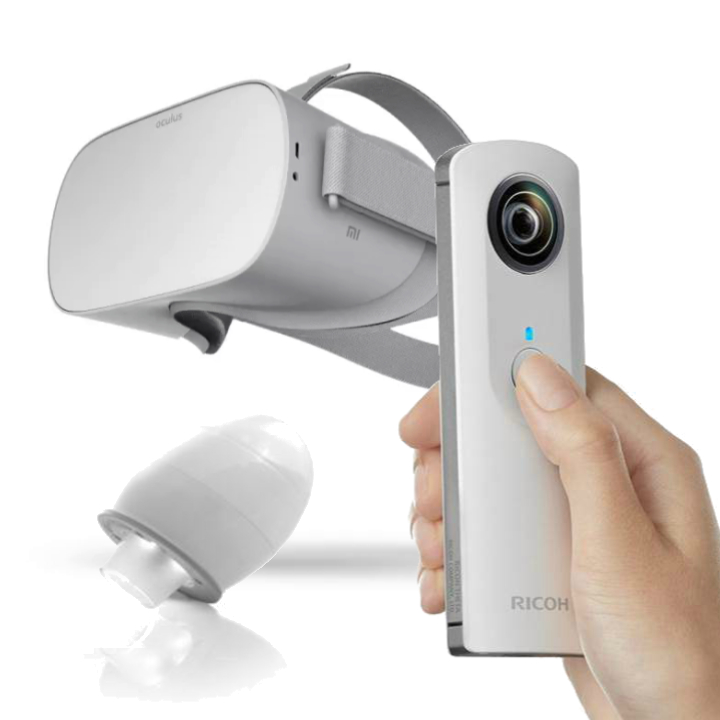Experiencing (from) the inside – Mediated perspectives in kindergartens
DOI:
https://doi.org/10.7577/formakademisk.4637Emneord (Nøkkelord):
digital images, spherical media, microscope, 360-images, kindergartenSammendrag
This paper presents a case study of preservice kindergarten teachers’ use of new form of digital imagery. The paper introduces spherical cameras and digital microscopes and discusses their affordances when introduced in practical use in in teacher education and in kindergartens. The use in kindergartens was introduced through a class of 34 teacher students in kindergarten education. The students were specializing in Arts and design at Western Norway University of Applied Sciences. The use of images from spherical cameras and digital microscopes is discussed and analysed, based on data from student responses through two questionnaires, group presentations and discussions in class, and an analysis of various media material produced by students.
Referanser
Bolter, J. & Grusin, R. (2000). Remediation: Understanding New Media. MIT Press.
Conole, G. & Dyke, M. (2004) Understanding and using technological affordances: a response to Boyle and Cook, ALT-J, 12(3), 301-308. https://doi.org/10.3402/rlt.v12i3.11261
Gadamer, H.-G. (1986). The relevance of the beautiful: Art as play, symbol and festival. In R. Bernasconi (Ed.). The relevance of the beautiful and other essays. (Trans. Nicholas Walker, pp. 3-53). Cambridge UP. (Original work published 1974)
Gadamer, H.-G. (1993). Truth and Method. (2nd Ed., Trans. J. Winsheimer & D. G. Marshall). Sheed & Ward. (Original work published 1989)
Gibson, J. J. (1979). The Theory of Affordances. In The Ecological Approach to Visual Perception. Houghton Mifflin.
Jacobsen, H. & Kofoed, T. & Loi, M. (2015). Barnehagemonitor 2015. Den digitale tilstanden i barnehagen [Kindergarten monitor 2015. The digital state of kindergarten]. Senter for IKT i utdanningen [Center for ICT in education.]. https://www.udir.no/globalassets/filer/tall-og-forskning/rapporter/2016/barnehagemonitor-2015.pdf
Johansen, S. L. (2015). Barns liv og lek med medier [Children's life and play with medias]. Cappelen Damm Akademisk.
McLuhan, M. (1964). Understanding Media: The Extensions of Man. MIT Press.
Merleau-Ponty, M. (1994). Kroppens fenomenologi [Phenomenology of Perception]. (Trans. B. Nake). Pax. (Original work published 1945)
Murray, J. (2011). Inventing the Medium – Principles of Interaction Design as a Cultural Practice. MIT Press.
Norwegian Ministry of Education and Research (2017) Framework Plan for the Content and Tasks of Kindergartens. Norwegian Ministry of Education and Research. https://www.udir.no/globalassets/filer/barnehage/rammeplan/framework-plan-for-kindergartens2-2017.pdf
Panofsky, E. (1991). Perspective as Symbolic Form. (Trans. C. Wood). Zone Books.
Roschelle, J. (2003) Unlocking the learning value of wireless mobile. Journal of Computer Assisted Learning devices, 19(3), 260-272. https://doi.org/10.1046/j.0266-4909.2003.00028.x
Thestrup, K. (2013). Det eksperimenterende fællesskab. Medieleg i en pædagogisk kontekst [The experimental community. Mediaplay in a pedagogical context]. (Phd thesis). Aarhus Universitet.
Rettberg, J.W. (2014). Seeing Ourselves Through Technology: How We Use Selfies, Blogs and Wearable Devices to See and Shape Ourselves. Palgrave Macmillan. https://doi.org/10.1057/9781137476661

Nedlastinger
Publisert
Hvordan referere
Utgave
Seksjon
Lisens
Opphavsrett 2021 Ingvard Bråten, Jon Hoem

Dette verket er lisensiert under Creative Commons Attribution-NoDerivatives 4.0 International License.
- Forfatteren(e) beholder sin opphavs- og kopieringsrett til eget manuskript, men gir tidsskriftet varig rett til 1) å fremføre manuskriptet for offentligheten i den opprinnelig publiserte digitale form, og 2) å registreres og siteres som første publisering av manuskriptet.
- Forfatteren må selv forvalte sine økonomiske kopieringsrettigheter overfor eventuell tredjepart.
- Tidsskriftet gir ingen økonomisk eller annen kompensasjon for innsendte bidrag, medmindre det er gjort særskilt avtale om dette med forfatteren(e).
- Tidsskriftet plikter å arkivere manuskriptet (inklusive metadata) i den opprinnelig publiserte digitale form, i minst ett dertil egnet åpent tilgjengelig langtidsarkiv for digitalt materiell, som for eksempel i de norske universitetenes institusjonsarkiv innen rammen av NORA-samarbeidet.
Verket vil bli publisert OpenAccess med en Creative Commons 4.0-lisens som tillater alle å lese, dele og tilpasse innholdet, også kommersielt, under lisensvilkårene:
Dette verket må tilskrives/ krediteres på riktig måte, en lenke må gis til CC-BY 4.0-lisensen, og endringer som er gjort må angis på en rimelig måte, men ikke på noen måte som antyder at lisensgiveren støtter deg eller din bruk.



